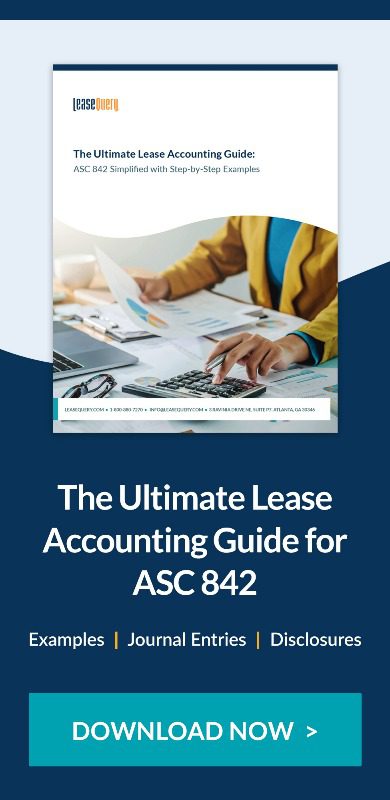As with any new standard update, adopting ASC 842 will require the implementation of new policies and procedures. To get a better idea of what policies and procedures should be developed, it is helpful to have a good understanding of what your auditors will be looking for. Providing your auditors with clear documentation of your transition to ASC 842 at the beginning of the audit, will result in a more efficient engagement for everyone involved.
Pre-adoption
Many of the procedures and policies to follow will need to be discussed prior to adoption to ensure a complete and accurate lease listing. Keep in mind developing new processes around lease accounting will involve coordinating and training multiple departments across your organization. Plan to have several meetings with various departments to review current procedures and how things need to change to address risk associated with the new leasing standard.
Policies
As you prepare for the transition, multiple decisions about how to transition will need to be made. Document and provide rationale for your decisions, seeking your auditors’ buy-in before you implement your new policies. Assume your auditors will ask for clarity on these policies, and be prepared to explain them.
- Transition Methods – ASC 842 requires companies to transition using a modified retrospective transition approach. This requires a cumulative-effect adjustment to equity to reflect the impact of adopting the standard. Companies can choose from two options:
- Effective Method – Apply the new standard as of the effective date, with any comparative periods presented under ASC 840
- Comparative Method – Apply the new standard as of the earliest comparative period presented
- Practical Expedients – The FASB provided relief options to organizations to lessen the burden of adopting ASC 842. Companies can choose to apply these options either by lease, by class of asset, or as an accounting policy election, depending on the type of practical expedient. Plan to include in your documentation which practical expedients you employed and how they were applied. Below is a listing of some of the available practical expedients to consider.
- Transition relief
- The package of practical expedients – ASC 842 provides three practical expedients that, if elected, must be applied together as a package to all of an entity’s leases (as a lessee and as a lessor) commencing before the entity’s adoption date.
- No reassessment of lease classification
- No re-evaluation of embedded leases
- No reassessment of initial direct costs
- Hindsight
- Land easements
- The package of practical expedients – ASC 842 provides three practical expedients that, if elected, must be applied together as a package to all of an entity’s leases (as a lessee and as a lessor) commencing before the entity’s adoption date.
- Recognition practical expedients
- Short-term leases
- Materiality threshold
- Other practical expedients
- Combining lease and non-lease components
- Discount rates
Lessees can make an accounting policy election to not recognize lease liabilities and right of use assets for short-term leases. This must be elected at the asset class level. A short-term lease is a lease that, at the commencement date, has a lease term of 12 months or less and does not include an option to purchase the leased asset that the lessee is reasonably certain to exercise.
It is important to note that ASC 842 requires entities to disclose short-term lease costs in their financial statements. Therefore, electing to not include short-term leases in your lease portfolio does not relieve the necessity to track these leases.
Lessees may also want to develop a materiality threshold below which lease assets and lease liabilities are not recognized before transitioning to save resources while gathering leases. Your lease materiality threshold can be similar to your asset capitalization threshold. However, you will need to develop your materiality threshold for leased assets and liabilities independently and include the rationale for its determination in your ASC 842 policy memo.
The combining of lease and non-lease components is a practical expedient that can save the lessee the difficulty of finding standalone pricing for lease and non-lease components or going through the exercise of allocating costs to components. Electing this practical expedient is viewed as a company policy and also includes determining whether it will be applied across the lease portfolio or by asset class. Whichever usage is chosen, explain your reasoning and make sure to discuss with your auditors early in the process.
See LeaseQuery’s article, Practical Expedient in Accounting Explained, for further explanation of the practical expedients available to elect.
Transition
The first step in compiling a list of your leases is to understand your lease portfolio. To ensure an efficient process you will want to educate your entire team on the definition of a lease, decide whether or not you will capitalize short-term leases, and document judgments and assumptions. Include these policies in your transition memo to keep your auditors informed.
Document judgments and assumptions impacting your lease accounting. Your conclusions on renewal, purchase and termination options impact lease terms. Therefore, you will want to document the factors that were considered and the rationale for the conclusions made. The guidance specifically mentions reviewing the business implications of the lease options, which includes current market conditions, the cost of relocating and/or the expenditures related to the leased asset or leasehold improvements.
Reasonably certain should be considered a high threshold. When assessing whether an option is reasonably certain to be exercised, a number of factors may be considered, such as company history and the economics of the situation. The rationale behind optional elections should be documented, including how the organization is “reasonably certain” certain elections will be made.
Perhaps your organization already has policies in place regarding when renewals or purchase options are exercised. These should be evaluated related to ASC 842 and their impact to the financial statements. If appropriate, company-wide policies for when to renew or purchase a lease can be considered.
Since some of these elections are applied at the asset class level it is important to determine your underlying classes of assets. There are two approaches to this. You can identify the class of assets by nature and characteristics. For example, real estate, equipment, vehicles, etc. are common types of leased assets. The second option is to identify assets on the basis of risk and use. For example, instead of building you may identify the type of real estate – office building, warehouse, easement lease, etc.
Procedures
The auditors will seek to understand the steps taken to mitigate the financial statement risks related to implementation. As you work to adopt ASC 842, record the processes completed to answer “yes” to these questions:
- Have you captured all leases?
- Is the data abstracted from contracts accurate and complete?
- Are calculations correct?
As a provider of lease accounting software to over 600 public companies who have successfully completed their transition to, and initial audit under the new lease accounting standard, LeaseQuery is in the unique position to offer advice on some of the actions the auditors may be looking for.
Have you captured all leases?
Specific procedures can be included in your initial data gathering plan to promote completeness. Not having these steps documented could result in the auditors spending extra time performing additional procedures to ensure the lease population is complete.
- Engage the right departments. Transitioning to the new standard is a team effort. Many departments are involved and will need to collaborate to make inventorying your leases a success. A good first step is to identify which departments to talk to and then establish a contact person in each of those departments. Provide training and education to these contacts early on so they understand ASC 842 and why identifying the full lease portfolio is critical.
- Request a lease listing and contracts from all departments involved. Using a uniform template to gather data will be helpful during this phase.
- Compare and reconcile the “physical” or actual contract copies with the leased asset listings obtained from separate sources – do you have a contract for each listed asset or are some missing – either assets or contract copies.
- Request a list of recurring payments from Accounts Payable and identify all of your rent payments. Analyze the listing for any recurring payments for service and other contracts that should be evaluated for embedded leases.
See LeaseQuery’s article How to Conduct an Inventory of Your Leases for example procedures to be performed and documented. These are just an example of procedures that can be performed. Fully document the steps your organization takes to ensure a complete lease population as part of your ASC 842 implementation.
Is the data abstracted from the contracts accurate and complete?
Auditors will want to understand the procedures applied to assess whether the data abstracted from the lease contracts is accurate and complete. Below are some steps to take to validate accuracy and completeness. Additionally, the auditors may perform some of these procedures themselves. Having previously completed, and therefore knowing of any potential anomalies, will help the audit go smoothly.
- Compare the recurring payment schedule received from the AP department to the expenses from your lease listing. Are contracts for all of your recurring rent payments included in your lease listing? If the recurring payment schedule has rent payments for which you do not have contract copies, you may have uncovered some embedded leases in the process. Go back to each department and obtain any contracts you may have missed to review for embedded leases.
- Match the lease identification information—location, asset serial number, contract, vendor data, etc.—for each lease to the physical assets from each location.
- Compare the final lease listing with the 5-year lease commitment schedule prepared annually for financial reporting – does the final lease listing reflect all of the leases on this schedule?
- Analyze total rent expense to see if any contracts may be missing:
- Extrapolate an annual rent expense from the final lease listing using the payment information from the contracts
- Reconcile the extrapolated annual rent expense (from step a.) to total annual rent expense from all the entity’s rent accounts
- If total actual rent expense is larger than the extrapolated amount, this may reveal the lease listing does not include all rental agreements. Are there some leases that still need to be added to the lease listing?
- If the annual extrapolated rent amount is larger than the total actual rent expense, this may imply a significant amount of embedded leases were discovered and added to the lease listing. Verify if that is the case.
One last tip – these amounts don’t need to reconcile exactly, but reconciling directionally, or in the ballpark, can indicate whether or not all leases were captured in the lease listing. And this may be a test the auditors perform so knowing the results ahead of time will be helpful.
Are the calculations correct?
Auditors will want to understand the procedures utilized to assess whether information used to calculate the lease liability and ROU asset is correct.
- Consider and document the judgments and assumptions used for matters impacting the accounting for leases such as the lease term and purchase options. For example, when determining renewal options are reasonably certain of exercise, document the factors leading to that conclusion.
- Document the rationale supporting the specific discount rates applied and any formulas or assumptions used to calculate them. Auditors will review the logic used to determine discount rates, and evaluate the significant assumptions and models used to generate such rates.
If you are using a software solution, obtain copies of the SOC 1 Type 2 report to assess whether internal controls over financial reporting are designed and implemented appropriately.
Have you disclosed everything necessary?
As with all accounting changes, entities must provide the required disclosures as a part of their financial statements. Develop processes and policies to ensure you are capturing all of the necessary qualitative and quantitative disclosure information. ASC 842 has expanded financial statement disclosures. The auditors will want to evaluate the completeness and accuracy of those disclosures based on an appropriate understanding of the company’s leasing activities and the requirements in ASC 842. Including any new policies or procedures for lease accounting financial reporting in your lease documentation will help smooth the audit process.
Summary
Several categories of policies and procedures need to be considered to effectively transition to ASC 842. Not only will you want to ensure your policies are robust enough, it will also be beneficial to have detailed documentation for your company to follow.
It is also important to keep in mind your auditor will not only want to see policies documented, but they will also want to see corroborative evidence the developed procedures are being performed. The more thorough and clear your record of policies established and steps taken to transition, the smoother your audit can be. Use the policies and procedures listed here to begin documenting your transition to ASC 842.
This article covers the policies and procedures to consider pre-adoption of ASC 842 and during your implementation. Watch for our follow-up article discussing the policies and procedures to support a steady state under the new lease accounting rules.











